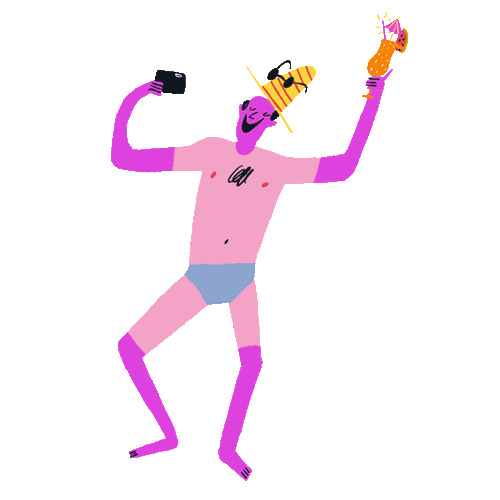How to... animate your illustrations
Jelly founder Chris Page talks us through the process of giving your art the animated treatment.
Illustration-led animation has become more and more commonplace over the last couple of years and it won’t be long until nearly all commercial illustrations will contain at least one animated element.
The past few World Illustration Awards at Somerset House (hosted by the amazing Association of Illustrators), show a continued rise in work being displayed in iPads, as they contained animated elements. A recent study by Ocean Outdoor showed that animated poster sites have three times the engagement of ‘normal’ ones, so make no mistake, if you are working commercially, the people who pay your fees will want your work to move.

Above: Jelly founder Chris Page.
The skill-set of the traditional illustrator has to either expand to include some animation techniques, or they need to learn to collaborate more with animation professionals.
In theory, any illustration can be made to move
There are a variety of different techniques that can be used when animating illustrator’s work. From cel animation to motion graphic after effects assisted, then to the 3D side, in theory any illustration can be made to move.

Credits
powered by
If a client is to commission an illustration, you shouldn’t be limited to only creating still pieces, but more often than not you will need to have the ability to make them move.
A perfect example of this was our brief for Bombay Sapphire. This started as a stills project but soon migrated into animation as the client explored various new media opportunities.
Label everything. If someone is animating it for you, they will love you forever. If you’re doing it yourself you will love it.
Since then, this kind of commission has become more and more commonplace. As clients look for more bang for their buck, the assets that they commission need to work in more and more commercial spaces.

LIST OF DOS
- Think about what is being added to the composition when adding motion. Think about how it can develop the story and not just move for the sake of it. Drawing a storyboard, no matter how quick and short, is extremely helpful.
- Create everything on different layers. Not just layers of line, colour, texture; but layers of what will move. For example, limbs (head, hands, upper arm, lower arm, at the risk of sounding like Dem Bones!), leaves on a tree, the pupil of an eye, stars, smoke, a mug.
- Think about what is behind each asset so that when it moves it doesn’t leave a blank space.
- The size that you create the assets doesn’t need to be as big as some normal illustrations are supplied. Video is 72dpi with HD ratio size of 1920px by 1080px, in comparison to print being 300dpi. Having assets that aren’t so big will speed up the production process, or at least not slow the computer down.
- Label everything. If someone is animating it for you, they will love you forever. If you’re doing it yourself you will love it.
This might sound silly, but you don’t need to draw the whole frame each time. Just the parts that move.
- If you’re looking to do a more cel-animated approach, sketch the two different poses of the movement (beginning and end), work out the speed and timings so you don’t over draw and create frames that no-one sees. Then work between those frames adding the extremes, contact positions and the aptly named, ‘in-betweening’.
- This might sound silly, but you don’t need to draw the whole frame each time. Just the parts that move. Mix your cel animation with keyframe animation in after-effects. That can be pans, zooms, swinging things, bouncing things... Make a little plan so you know what technique you will use for what part.
- The internet is your best friend. Someone’s tried it before and is happy to share how they have done it. Even if it’s not exactly what you want, there will be little snippets you can use and develop on.
- Don’t be afraid to ask for advice or inspiration. Once you have worked it out make sure you reciprocate.
- Everyone works differently so make sure to have a quick chat with your local friendly animator to see how they would like artwork supplied. Some people want the textures separate, some people want them flattened.
- Not everything has to move. We’ve found that even just a very subtle lighting effect, a wobble of a background design or a blink is very effective. If you’re just adding interest or a small movement to a single illustration, then start small.
Everyone works differently so make sure to have a quick chat with your local friendly animator to see how they would like artwork supplied.
LIST OF DON’TS
- Don’t give up. There’s no magic answer, trick, secret, technique to suddenly being able to animate. As with anything creative, it takes time and patience. So much patience.
- That’s it!

Obviously, there are many increments of animation – from simple movement within a simple image, through to short GIFs and loops, then moving toward short story-telling pieces.
It’s probably worth noting that there is a long, long journey from animating illustrations to becoming a fully-fledged animation director, so don’t expect to be able to start telling long-form stories straight away, but hopefully if you follow these few simple steps you can go from having just a portfolio to the beginnings of a reel.
)




 + membership
+ membership










